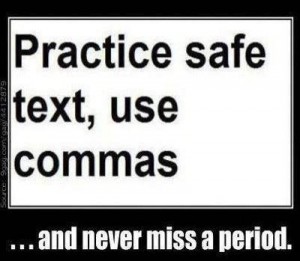Is the comma going the way of the semicolon?
Style matters. Clarity counts.
In 2008, Paul Collins wrote a piece for Slate titled Has Modern Life Killed the Semicolon? Modern life, his researched proved, was circa 1850 and a main cause the advent of the telegraph. The modest semicolon was billed $5, just like any other word in a telegram. With haste and frugality, and perhaps laziness, semicolon use dropped from 68.1 to 17.7 per thousand words between the 18th and 19th centuries.
The graph below, generated from Google Books Corpus, suggests it hasn’t recovered.
I’m a fan of this simple, yet powerful, mark; it offers a breath to a sentence and builds a bridge between two independent clauses. It allows for more descriptive, compelling writing.
Its use seems shunned on the Web. The folks over at The Content Factory put the war against the semicolon at the top of their 10-point Web writing rules:
1.) Semicolons
I could go on about how semicolons have no place on the Internet, but I’ll let Kurt Vonnegut do the talking for me: “Here is a lesson in creative writing. First rule: do not use semicolons. They are transvestite hermaphrodites representing absolutely nothing. All they do is show you’ve been to college.” So, don’t use semicolons in any of the blogs you write — they just alienate the reader and make you look pretentious.
Ouch, cruel words.
Is less always more?
Comma use is one of the myriad differences between British English and American English. British English does not favor the serial comma — despite the risks of wrongful interpretation — while American English advocates the clarity it offers.
The debate on the merits of comma use, or serial comma use, is becoming obsolete. Today, communications are dominated by 140-character snippets where every space and character counts. Just like back in the “modern times” of the mid-19th century when punctuation was just too expensive to include in a telegram (and deciphering a message was sometimes laborious).
Lynn Truss’ Eats, Shoots & Leaves devotes a wonderful chapter to the comma, its history, and the battles it has triggered. Her pragmatism is refreshing.
Punctuation marks [are] the traffic signals of language: ‘they tell us to slow down, notice this, take a detour, and stop’… The rule is: don’t use commas like a stupid person… More than any other mark, the comma requires the writer to use intelligent discretion and to be simply alert to potential ambiguity.
(pp. 85 and 96)
So slow down. Enjoy a good read. Hear the music in the words. Take time to reflect on what the writer has taken time to write.
And remember:

Tags: copywriting, siteEN, social media, Writing

![By Brett (Own work) [CC-BY-SA-3.0 (http://creativecommons.org/licenses/by-sa/3.0) or GFDL (http://www.gnu.org/copyleft/fdl.html)], via Wikimedia Commons](http://upload.wikimedia.org/wikipedia/commons/b/b1/SemicolonFreq.png)




(comments disabled)